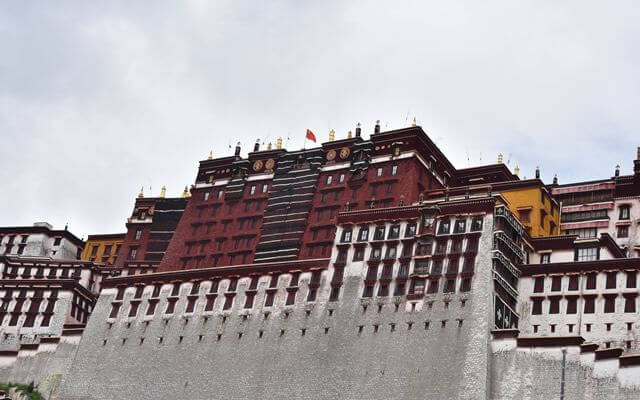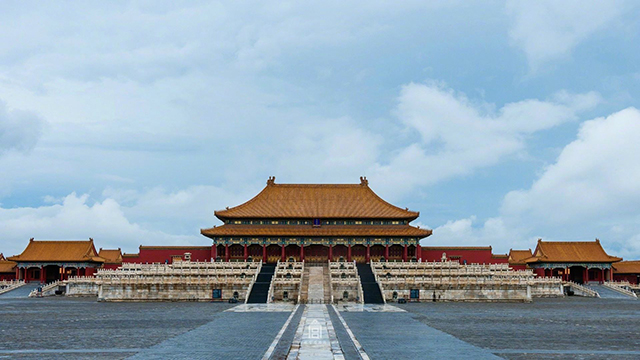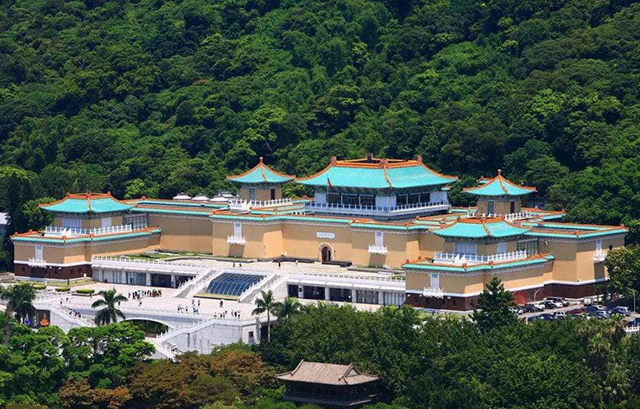In China’s long history, many palaces have been built. Some are for royal use, and some are for other users. These palaces are magnificent, with a long history and special significance. The top ten famous palaces in China are these:
1. Potala Palace in Lhasa

The Potala Palace is the highest in the world and the largest and most complete ancient palace complex in Tibet. The Potala Palace is the essence of ancient Chinese architecture. It is the landscape pattern on the back of the fifth set of RMB 50 notes. It is a national AAAAA-level tourist attraction and a world cultural heritage. The main landscape of the Potala Palace is composed of palaces, murals, and spiritual towers. The main attractions include Pabalakan, White Palace Deyangsha, Tsochen Si Phuntsoknu, Uzgapi, Qimei Dedanji, Duikorakorn, Potala Palace Treasure Hall and so on.
Address: No. 35, Gongqian Alley, Beijing Middle Road, Chengguan District, Lhasa, Tibet Autonomous Region
2. The Imperial Palace of Ming and Qing Dynasties
The Forbidden City in Beijing is the imperial palace of the Ming and Qing Dynasties in China. It was formerly known as the Forbidden City. It is located in the center of the central axis of Beijing and is the essence of ancient Chinese palace architecture. The Forbidden City in Beijing is centered on three major halls, with more than 70 large and small palaces and more than 9,000 houses. It is one of the large-scale and well-preserved ancient wooden structures in the world. It was listed as a world cultural heritage in 1987. The Shenyang Forbidden City is one of the two remaining palace complexes in China. It covers an area of more than 60,000 square meters. There are 114 ancient buildings and more than 500. It is well preserved and is an ancient site with rich historical and cultural connotations. . It was listed as a world cultural heritage in 2004.
Address: Beijing Central Axis, Shenyang Road, Shenhe District, Shenyang City, Liaoning Province
3. The Palace Museum

The Palace Museum in Beijing, the Forbidden City, the Royal Palace, a national 5A tourist attraction, the first of the five largest palaces in the world, and a world cultural heritage. The Palace Museum was established on October 10, 1925. It is located in the Forbidden City of the Forbidden City in Beijing. It is a comprehensive Chinese museum established on the basis of the imperial palaces of the Ming and Qing dynasties and their collections. Its collection of cultural relics mainly comes from the palaces of the Qing Dynasty. The old collection is the first batch of national patriotic education demonstration bases. The Forbidden City in Beijing is one of the first batch of national key and first batch of national 5A-level tourist attractions. It was selected into the “World Cultural Heritage List” in 1987.
Address: No. 4, Jingshanqian Street, Dongcheng District, Beijing
4. Shenyang Palace Museum
The Shenyang Palace Museum was originally an imperial palace built and used in the early Qing Dynasty. It was built in 1625 (five years in the revelation tomorrow, ten years after the golden fate). The Shenyang Palace Museum, built on the ruins of the palace, is a famous ancient palace art museum, and its collection contains a very rich collection of palace art. In 1961, the State Council designated the Shenyang Imperial Palace as one of the first batch of national key points; on July 1, 2004, the 28th Committee meeting approved the Shenyang Imperial Palace as an extension of the Ming and Qing imperial palace cultural heritage projects to be included in the “World Cultural Heritage List.” The high platform architecture and the “high palace and low palace” architectural style of the Shenyang Forbidden City are unique in the history of Chinese palace architecture.
Address: No. 171, Shenyang Road, Shenhe District, Shenyang City, Liaoning Province
5. Taipei Palace Museum

The National Palace Museum in Taipei, also known as the National Palace Museum in Taipei and Zhongshan Museum, is a large-scale comprehensive museum in China, the largest museum in Taiwan, and one of the three largest museums in China. It is an important center for the study of ancient Chinese art history and sinology. The National Palace Museum in Taipei is located at No. 221, Section 2, Zhishan Road, Shilin District, Taipei City. It was built in 1962 and completed in the summer of 1965, covering a total area of about 16 hectares. In order to imitate the traditional Chinese palace-style architecture, the main building has 4 floors, white walls and green tiles, and the main courtyard is plum-shaped; the square in front of the courtyard stands five six-pillar archways, the whole building is solemn and elegant, rich in ethnic characteristics.
Address: No. 221, Section 2, Zhishan Road, Shilin District, Taipei City, Taiwan
6. Weiyang Palace
Weiyang Palace is the main hall of the Western Han Empire. It was built in the 7th year of Emperor Gaozu in the Han Dynasty (200 years ago). It was supervised by Liu Bang’s important minister Xiao He and built on the basis of Qin Zhangtai. It is located at the highest southwest corner of the Han Chang’an city. The Shouyuan is located west of Anmen Street in Chang’an City, also known as the West Palace. Weiyang Palace is one of the large-scale palace complexes in ancient China. The total area is six times the size of the Forbidden City in Beijing. There are pavilions, towers, pavilions, landscapes and pools among them. Its architectural form has profoundly influenced the architecture of the palace city of later generations. It laid the basic pattern of China’s Miyagi architecture for more than two thousand years.
Address: Weiyang District, Xi’an City, Shaanxi Province
7. Afang Palace Site
The Afang Palace is known as the “first palace in the world”, and it is the first new dynasty palace built by the Qin Empire, the first unified multi-ethnic centralized state in Chinese history. It is located 15 kilometers west of the western suburbs of Xi’an City, Shaanxi Province and 15 kilometers southeast of Xianyang City. It was built in the 35th year of Qin Shihuang (212 years ago). The Afang Palace, the Great Wall, the Mausoleum of the First Emperor of Qin, and the Qin Zhidao are collectively called the “Four Major Projects of the First Emperor of Qin”. They are the first unified landmark buildings in China and the physical signs that the Chinese nation began to form.
Address: Afang Village, Weiyang District, Xi’an City, Shaanxi Province
8. Lama Temple
The Lama Temple is located in the northeast corner of Beijing. In the 33rd year of Emperor Kangxi of the Qing Dynasty (1694), Emperor Kangxi built a mansion here and bestowed it on the four sons of Prince Yong, which was called Prince Yong’s Mansion. In the third year of Yongzheng (1725), the palace was changed to the palace, called Lama Temple. In 1983, the Lama Temple was designated by the State Council as a national key temple for Buddhism in the Han area. The temple is mainly composed of three exquisite archways and a magnificent hall of Wujin. With an area of 66,400 square meters, there are more than 1,000 halls. Today’s Lama Temple is a place for religious activities, museums and tourist attractions, attracting a large number of tourists and believers from all over the world every day.
Address: No. 12, Yonghegong Street, Dongcheng District, Beijing
9. Qin Xianyang Palace Site Museum
Xianyang Palace is the imperial palace of the Qin Empire. It is located in the west of Xi’an and the east of Xianyang in present-day Shaanxi Province. In the twelfth year of Qin Xiaogong (350 years ago), Qin moved its capital to Xianyang and built palaces. At the latest when King Qin Zhao arrived, Xianyang Palace had been completed. At first, Xianyang Palace was located on the northern terraces of Xianyang City, the capital of Qin Dynasty. During the process of Qin Shihuang’s unification of the Six Kingdoms, it continued to expand. According to records, the Xianyang Palace was “Beijing Yingdian” and was the place where Qin Shihuang was “listening to things” when he was in power.
Address: Niuyang Village, Yaodian Town, Weicheng District, Xianyang City, Shaanxi Province
10. Qingyang Palace
Qingyang Palace is located in the second section of the West Section of the First Ring Road in Chengdu, Sichuan. It is one of the national and provincial key Taoist temples and famous Taoist temples. It is known as “the first Taoist temple in western Sichuan” and “the first jungle in the southwest”. Qingyang Palace was built in the Zhou Dynasty and destroyed by military disasters in the Ming Dynasty. Most of the existing buildings were rebuilt from the 6th to 10th year of Kangxi (1667-1671), covering an area of about 120,000 square meters. The main buildings of Qingyang Palace include Shanmen, Sanqing Hall, Tangwang Palace, etc. The Bagua Pavilion is the most complete and luxurious building among them, and enshrines the statue of Lao Tzu riding a green bull. The Taoist Collection in the palace is a relatively complete version preserved in the world, and it is a precious material for studying Taoism.
Address: No. 9, West Second Section, First Ring Road, Qingyang District, Chengdu City, Sichuan Province